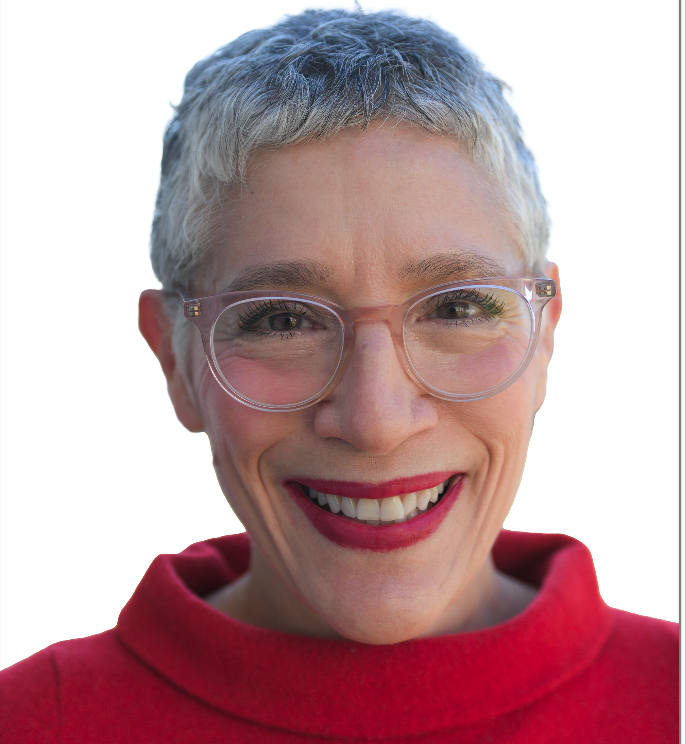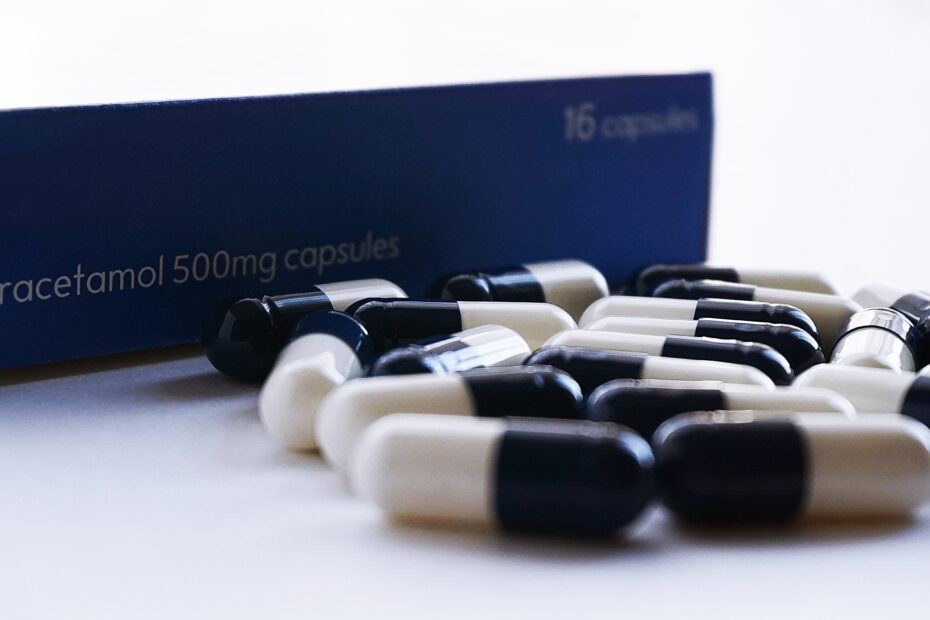AMA Philadelphia caught up with Deb Silverman, an Executive Vice President of Brand Strategy at Inizio Evoke, a global health marketing, communications, and transformation platform, that brings the human lens to health brands. She shares insights and tips from 20 + years of experience in healthcare advertising to rediscover the heart of health brands, the patient-focused refresh, how brands evolve through the shake-ups, and the future of health brand strategy. She has worked with some of the biggest, most well-known health brands, like Breathe Right nasal strips, and Jardiance, for over 10 years, Plan B, “equivalent to the Kleenex of emergency contraceptives,“ and more.
Journey to the Heart of Health Brands
What has led you to health brands?

Deb Silverman: I spent about 15 years in consumer advertising on Consumer-Packaged Goods (CPG), technology, and business-to-business, across a number of big shops in New York. I stumbled into healthcare when I began working with some over-the-counter brands. That led to an offer to become the first brand strategist ever to work on Nexium in its heyday when it was a blockbuster drug, which led to a position at AstraZeneca, where I made a short detour for about four years as a Consumer Marketing Director.
But ultimately I realized I’m an agency person at heart and I went back to the Agency side, first to Digitas Health and then to Evoke where I’ve been for the last 10 years (now called Inizio Evoke as of four months ago).
What is the core role of being an EVP of Health Brand Strategy?
DS: I develop a deeper understanding of our target audience and their unique challenges. Advertising is not everything; it’s only part of the story. My strategic role is to represent the voice of the customer and make sure everything we do remains true to that.
Health Brand Refresh
How does your strategy evolve with health brands?
DS: Strategy development begins with understanding our target audience within the disease state, and using that understanding to develop the narrative of what your brand stands for. The evolution of strategy begins with taking a fresh look at that audience in the context of a changing world. The role of a brand is constantly changing with shifts in the market, and strategy needs to evolve with those changes. Consider how the type two diabetes category has changed dramatically in 10 years. The first shake-up was when drugs like Jardiance received indications for cardiovascular benefits. This new benefit changed how people evaluated Type 2 Diabetes medication.
But most recently, Ozempic has changed the entire way that people look at their own healthcare and their level of personal involvement in their care. So, Ozempic is in and of itself shaking up the industry.
When major events like this happen, you have to revisit your audience and ask: Do we really know them? How have they changed? What’s different about them? What do they want to hear from a brand now? Is our work measuring up to their evolving needs?
Health Brand Shake-ups
What is a shake-up in the health brand world?
DS: For generations, people have felt shame and blame for diseases like high blood pressure, high cholesterol, and diabetes. They believed they had to step up to the plate and take responsibility for their health, and if they couldn’t manage their diet, exercise, and everything else, they felt like it was their fault.
Ozempic is starting to create a real cultural conversation about the role of medication in obesity today. This has led to fresh perspectives and new questions: Is obesity my fault or is it a disease? What responsibilities do I have? What is the role of fitness and diet in my life today?
In the age of Ozempic, we are redefining what people’s role is in their healthcare and what’s acceptable. People still struggle and feel judged by society, but Ozempic is rapidly starting to make a dent in that.
How does it feel to work with brands that are changing the culture?
DS: It’s exciting because I’ve worked in healthcare for a long time without anybody talking in the public sphere about things that are related to what I do. But now, I open up the New Yorker or the Atlantic or The Sunday Times or even the Wall Street Journal and there’s an article about how Ozempic is reshaping how we think about health. And similarly, the brand that I work on (Jardiance) is getting some of that halo effect.
Have you seen Jardiance’s advertising recently? We’ve taken a completely different approach to our competitors which involves creating a musical out of the protagonist’s story. It’s a big deal, getting a lot of play on social media and online in this public sphere, and tracking tells us it’s currently the best-performing therapy in the category, in terms of campaign recognition. So, for the first time in a long time, since I’ve worked on pharma brands, people know what I work on. When asked they say, ‘I’ve seen that on TV!’ That very rarely happens. So that’s exciting, too, on a personal level.
The Heart of Health Brands
What are the challenges of putting a human face on healthcare marketing?
DS: The biggest challenge is tapping into the specific emotional needs and benefits that are specific to a disease state. Regardless of whether you have diabetes, psoriasis, kidney disease, heart disease, even allergies, the emotional benefits of treatment all roll up to getting back to your normal self, to a sense of freedom and control. So, you need to find ways for your brand to stand out, and that comes from uncovering those nuggets of insight that are specific to your category, and then leveraging them creatively in a unique way that makes your brand resonate with patients. So it doesn’t just rest on that giant stone of freedom or control.
How do you go deeper and uncover those nuggets of insight to differentiate your brand?
DS: I know it seems old-fashioned to say, but it’s having really good qualitative research where I’m talking to consumers one-on-one. Sometimes, I’m doing the research myself. There’s no substitution for this kind of personal dialogue with a patient and understanding where they’re coming from, getting a sense of what challenges they face, and the joy that they have that are in their lives, despite their illness. Then it’s speaking to enough people that you can see the themes and the threads that are coming through.
Are you listening for triggered emotions, frustrations, or struggles?
DS: Yes, and I’m doing it iteratively. As I uncover what I think are insights, I’m coming up with hypotheses and I pressure testing them with the person I’m talking to and weaving that into conversations with the next person. So, it’s very proactive and iterative. It’s something you can’t get from just doing social listening.
How does pressure testing work?
DS: I was interviewing somebody about birth control devices that are placed under the skin, in a person’s arm. And, I noticed while I was talking to her, that she started to stroke her arm where it was. And I said, ‘Do you do that a lot? Do you touch your skin where the device is? ‘And she said, ‘Yeah, it’s reassuring to me to know that it’s there.’ I thought that was interesting. So, when I interviewed the next person, I asked, ‘Is this true for you? And tell me, can you talk about that a little bit?’ She said, ‘Yeah, I do that as well for the same reason.’
It turned out this was a significant insight that was deeply connected to this particular product. That sense of reassurance, of knowing your birth control was always right there, became foundational to the positioning, and it was something I most likely would not have uncovered by combing the internet and looking at peoples’ social activity. You have to go directly to the source.
What challenges do you foresee for digital marketing companies in 2024 and beyond?
DS: One challenge, especially in pharma, is that the more the medium becomes the message, the more that patients become vehicles that drive the landscape. It’s hard because it’s not a factor you can control. It’s like celebrities. You can’t control what they say. And the more social becomes a place where people get their information, the more healthcare companies are going to have to deal with a regulatory environment that they’re not they’re not comfortable with. Social is still not geared toward highly regulated products like prescription drugs.
In a night of 1,000 Celebrities appearing in commercials, are we approaching a time when the ads in which they appear merely reinforce brand loyalty but fail to change buying behaviors with so little product information being mentioned?
DS: No, but I do think we are seeing an increase in the misguided use of celebrities. They are meant to make people stop in their tracks and pay attention. People think, ’I know that guy,’ and it makes them want to pay attention to the ad. Celebrities can make this happen.
However marketers need to think through how the celebrities’ presence enhances or undermines their strategy. It has to fit. What does the celebrity stand for? Does this fit with and enhance the main message of your brand? Sometimes it’s done well. Other times, you’re left with the impression that you just saw a bunch of celebrities but you can’t even remember what the product was, because there was no synergy between them, or the celebrity’s presence just didn’t enhance the brand story at all.
But when it’s done right, like when Judge Judy was used well in the Elf cosmetic ads, because this clean beauty brand has a no-nonsense message and approach, it sparks curiosity about the product.
Super Bowl Smackdown Savvy
Do marketers need to acknowledge the heterogeneity of the Superbowl audience when considering the actual reach that it offers? And is it still a wise use of budget for new brands to break into?
DS: That depends on your target audience. What message are they trying to get out there? Take Budweiser, they have a very specific kind of male target, with a specific mindset. And last year in an effort to grow their audience they made a big mistake going after segments that didn’t mesh with their heavy user. But a brand like Pfizer, who appeals to everybody, because they make medicines to cure cancer, they do need to show the heterogeneity of the world we live in. They need to appeal to a broad range of people. So, it comes down to what your strategy is, whether it makes sense, and it still depends on the brand. And I still do believe that the Super Bowl can be a wise use of resources for brands because it enables them to break through. You have so many eyeballs on the spots, people going out of their way to watch commercials. It’s the only time of the year where everybody likes commercials!
The views expressed here are those of the author and Deb Silverman and do not represent Inizio Evoke’s viewpoints or opinions.
Looking for more marketing insights for the coming year?
Join Deb Silverman and other top marketing thought leaders for exclusive, live insights at our annual Superbowl Smackdown on February 15, where they’ll dive into how top brands creatively use the Super Bowl to elevate their identity and boost brand awareness.
Lynda Dell is the AMA Philadelphia blog editor and content strategist who is a web copywriter for B2B, health brands, ed publishing, and learning markets to become a sought-after online resource driving sales and growth. When not writing and developing content, you can find her exploring Grounds for Sculpture in Hamilton Township, NJ, going on nature hikes, and binging on personal development podcasts.
